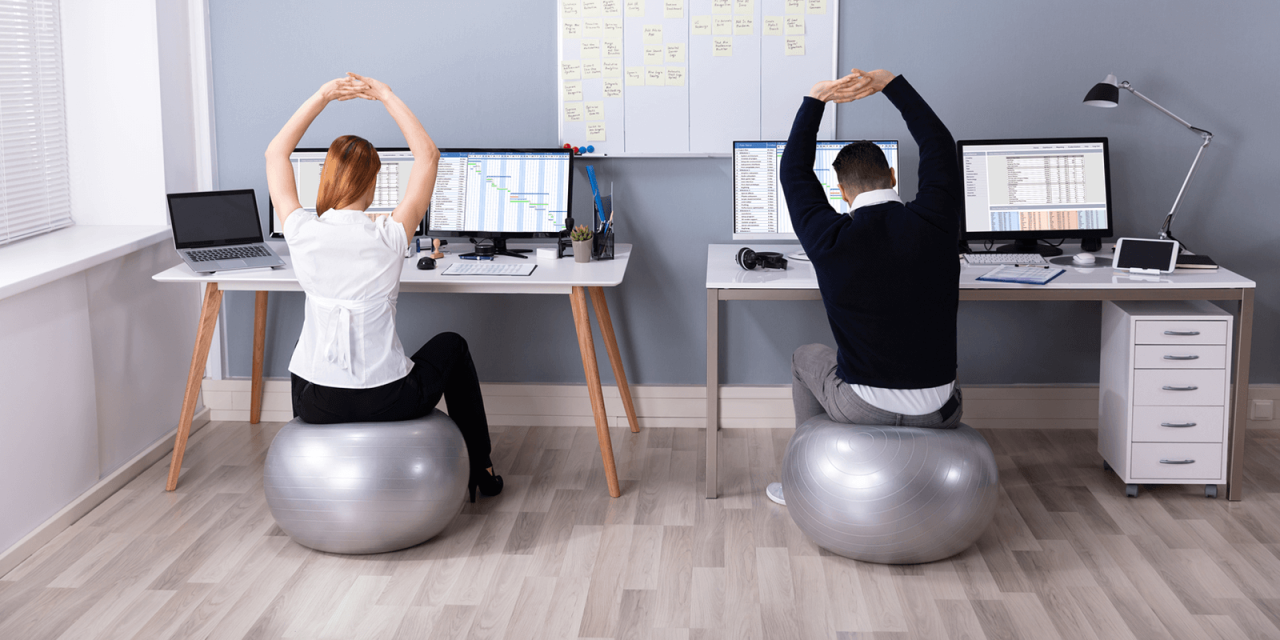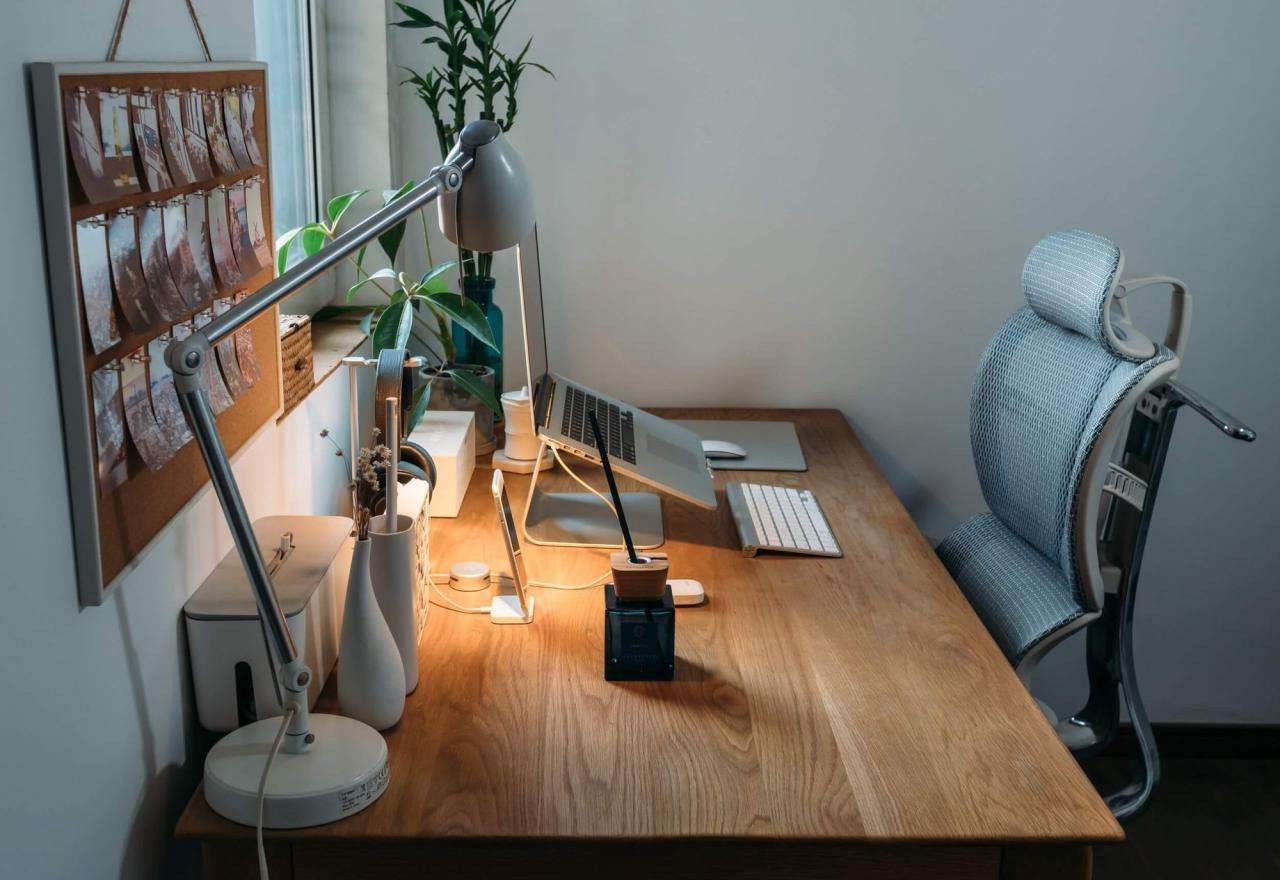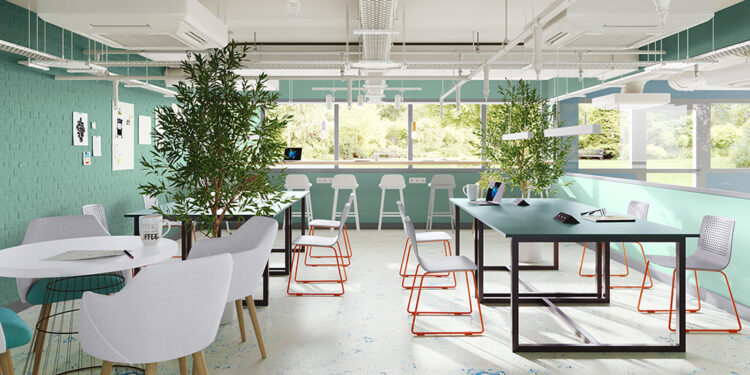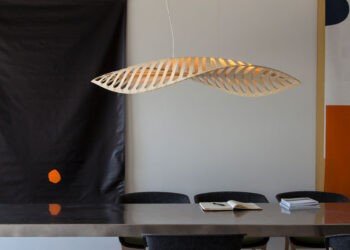In our modern world, where screens dominate our work and leisure, and repetitive tasks are commonplace, ergonomic design solutions have transitioned from specialized considerations to essential elements for human well-being and productivity. It’s more than just a comfortable chair; it’s a holistic approach to designing products, environments, and systems that fit the user, rather than forcing the user to adapt. This comprehensive article delves into the core principles of ergonomics, explores its profound impact across various industries and daily life, and examines the innovative solutions that are shaping healthier, more efficient, and ultimately more humane interactions between people and their tools and surroundings. We’ll uncover how thoughtful ergonomic design isn’t just about preventing injury, but about enhancing comfort, performance, and overall quality of life.
The Science of Ergonomics

Ergonomics, derived from the Greek words “ergon” (work) and “nomos” (laws), is the scientific discipline concerned with the understanding of interactions among humans and other elements of a system. It’s the art and science of “designing for people.” The goal is to optimize human well-being and overall system performance.
A. Human-Centered Approach: At its core, ergonomics is deeply human-centered. It starts by understanding human capabilities, limitations, and needs – both physical and psychological – to create designs that are intuitive, comfortable, and safe.
B. Multidisciplinary Field: Ergonomics draws from various disciplines, including anatomy, physiology, psychology, engineering, industrial design, and even computer science. This interdisciplinary nature allows for a comprehensive understanding of human interaction with systems.
C. Optimizing Performance: Good ergonomic design leads to improved efficiency, fewer errors, and enhanced productivity because users can interact with tools and environments more naturally and effectively.
D. Enhancing Well-being: A primary goal is to reduce physical strain, discomfort, and the risk of musculoskeletal disorders (MSDs), while also minimizing mental fatigue and stress. This directly contributes to long-term health.
E. System Thinking: Ergonomics considers the entire system – the user, the equipment, the task, and the environment – understanding that all these elements interact and influence each other. A solution in one area might impact others.
F. Iterative Process: Ergonomic design is rarely a one-off. It involves continuous observation, testing, feedback, and refinement based on user interaction in real-world scenarios.
G. Types of Ergonomics:
* Physical Ergonomics: Focuses on human anatomical, anthropometric, physiological, and biomechanical characteristics as they relate to physical activity (e.g., posture, material handling, repetitive movements, workplace layout).
* Cognitive Ergonomics: Deals with mental processes, such as perception, memory, reasoning, and motor response, as they affect interactions among humans and other elements of a system (e.g., mental workload, decision-making, human-computer interaction, stress).
* Organizational Ergonomics: Concerned with the optimization of socio-technical systems, including their organizational structures, policies, and processes (e.g., shift work design, teamwork, quality management, telework).
By applying these principles, ergonomic design moves beyond mere comfort to create truly integrated and effective solutions that safeguard health and boost performance.
Key Principles Driving Ergonomic Innovation
Innovation in ergonomic design is driven by a deep understanding of human factors and a commitment to creating user-friendly, safe, and efficient solutions.
I. Anthropometry and Biomechanics
Understanding human body measurements and how the body moves is fundamental.
A. Anthropometric Data: Designing to accommodate a wide range of human body sizes (e.g., heights, reaches, weights, eye levels) by using percentile data (e.g., designing for the 5th to 95th percentile). This ensures products are usable by a diverse population.
B. Biomechanics: Analyzing how muscles, bones, joints, and tendons work together during movement. This informs designs that reduce awkward postures, minimize excessive force, and prevent repetitive strain injuries. Innovations include real-time biomechanical analysis tools.
C. Adjustability: Providing adjustable features (e.g., seat height, monitor arm, keyboard tilt) allows users to customize equipment to their unique body dimensions, crucial for multi-user environments.
D. Range of Motion: Designing products and workspaces that allow users to perform tasks within their comfortable range of motion, avoiding overreaching or constrained postures.
E. Posture Support: Creating designs that support neutral body postures, minimizing stress on the spine, neck, and joints (e.g., lumbar support in chairs, contoured tool handles).
Applying anthropometric and biomechanical principles ensures that designs are truly “fit for human use,” promoting physical comfort and preventing injury.
II. Usability and User Experience (UX)
Ergonomics extends beyond physical comfort to how easily and effectively users can interact with systems.
A. Intuitive Controls: Designing controls that are logically placed, clearly labeled, and provide immediate feedback, making them easy to learn and operate without cognitive strain.
B. Minimizing Mental Workload: Streamlining processes, reducing unnecessary steps, and presenting information clearly to prevent cognitive overload and decision fatigue.
C. Error Prevention and Recovery: Designing systems that anticipate potential human errors and provide clear guidance for correction, reducing frustration and improving efficiency.
D. Consistent Design Language: Using consistent icons, layouts, and interaction patterns across a system or product line to build user familiarity and reduce learning curves.
E. Feedback Mechanisms: Providing clear and timely feedback (visual, auditory, haptic) to users about their actions and system status, enhancing a sense of control and confidence.
F. Accessibility for All: Ensuring designs are usable by people with diverse abilities, including those with visual, auditory, cognitive, or motor impairments. This is a core tenet of modern ergonomic UX.
Good ergonomic UX design makes technology disappear, allowing users to focus on their tasks rather than struggling with the interface.
III. Environmental Factors
The physical environment significantly impacts human performance and well-being, forming a crucial aspect of ergonomic consideration.
A. Lighting: Designing for optimal illumination – balancing natural and artificial light, reducing glare, ensuring adequate brightness for tasks, and considering color temperature for mood and circadian rhythms.
B. Temperature and Humidity: Maintaining comfortable thermal conditions (not too hot, not too cold) to prevent discomfort, fatigue, and reduced cognitive function. Innovations include smart HVAC systems that adapt to occupancy.
C. Noise Control: Minimizing disruptive noise levels in workspaces through acoustic design, sound-absorbing materials, and strategic placement of equipment, while sometimes incorporating beneficial ambient sound (e.g., white noise).
D. Air Quality: Ensuring good ventilation, reducing airborne pollutants, and monitoring CO2 levels to maintain a healthy and productive indoor environment. Biophilic elements like plants also contribute.
E. Vibration: Minimizing vibrations from machinery or tools to reduce physical fatigue and long-term health issues for users.
F. Space and Layout: Optimizing the physical layout of workspaces, homes, and public areas to allow for efficient movement, clear sightlines, and adequate personal space, reducing feelings of crowding or confinement.
Considering environmental ergonomics creates holistic solutions that support overall user well-being and productivity.
Ergonomic Solutions Across Diverse Industries

Ergonomic design is far-reaching, improving daily life and work efficiency in myriad sectors.
I. Office and Workspace Ergonomics
The modern office is a prime focus for ergonomic interventions, given the prevalence of sedentary work.
A. Ergonomic Chairs: Highly adjustable chairs with lumbar support, adjustable armrests, and dynamic recline mechanisms that support neutral posture and movement. Innovations include chairs that encourage active sitting.
B. Adjustable Desks (Sit-Stand): Desks that allow users to easily alternate between sitting and standing postures, reducing the negative health impacts of prolonged sitting and boosting energy levels.
C. Ergonomic Keyboards and Mice: Designed to minimize wrist deviation, reduce strain from repetitive movements, and provide comfortable hand positions. Vertical mice and split keyboards are common solutions.
D. Monitor Arms and Placement: Allowing monitors to be adjusted to eye level and optimal distance, reducing neck and eye strain. Multiple monitors are also ergonomically arranged.
E. Footrests: Providing support for feet, especially for shorter individuals, to maintain proper leg and back alignment.
F. Workspace Layout: Arranging equipment and tools within easy reach (primary and secondary work zones) to minimize stretching and awkward movements.
Office ergonomics aims to create dynamic, supportive workstations that promote comfort, prevent injuries, and enhance cognitive focus throughout the workday.
II. Healthcare Ergonomics
In healthcare, ergonomics is vital for both patient safety and the prevention of musculoskeletal injuries among healthcare workers.
A. Patient Handling Equipment: Designing hoists, lifts, and transfer aids to reduce the physical strain on nurses and caregivers during patient transfers, preventing back injuries.
B. Adjustable Hospital Beds: Beds that can be easily adjusted for patient comfort, medical procedures, and to facilitate easier access for caregivers.
C. Ergonomic Medical Devices: Designing surgical tools, diagnostic equipment, and medical carts with improved grips, reduced weight, and intuitive controls for ease of use and precision.
D. Operating Room Layouts: Optimizing the arrangement of equipment and lighting in operating theaters to minimize awkward postures and improve surgical team efficiency.
E. Pharmacy and Lab Workflow: Designing workstations and processes in pharmacies and labs to reduce repetitive motions, improve visibility, and minimize errors in medication dispensing or sample handling.
F. Mobility Aids: Designing wheelchairs, walkers, and other mobility aids that are comfortable, easy to maneuver, and supportive of various body types, improving patient independence and dignity.
Ergonomics in healthcare directly contributes to better patient outcomes and a safer, more sustainable workforce.
III. Industrial and Manufacturing Ergonomics
For physically demanding jobs, industrial ergonomics focuses on minimizing risk and maximizing efficiency.
A. Tool Design: Designing power tools and hand tools with ergonomic grips, reduced vibration, balanced weight, and accessible controls to prevent hand-arm vibration syndrome and other MSDs.
B. Workstation Design: Customizing workstations (height, reach, lighting) for specific tasks to ensure optimal posture and movement, whether for assembly, packaging, or quality control.
C. Material Handling Solutions: Implementing automated lifting devices, conveyors, and ergonomic carts to reduce manual lifting and carrying, preventing back injuries.
D. Repetitive Task Analysis: Identifying and redesigning tasks that involve highly repetitive motions to introduce breaks, vary movements, or automate processes where possible.
E. Protective Equipment Design: Designing personal protective equipment (PPE) like gloves, hard hats, and safety shoes for comfort, fit, and minimal interference with work tasks.
F. Assembly Line Optimization: Arranging workstations and parts delivery to minimize excessive reaching, bending, and twisting, improving flow and reducing fatigue.
Industrial ergonomics is crucial for creating safer, healthier, and more productive working environments in manufacturing and logistics.
IV. Consumer Product Ergonomics
Almost every consumer product we interact with benefits from ergonomic design, often subtly.
A. Smartphone Design: Ergonomics influences phone shape, button placement, screen size for comfortable single-hand use, and weight distribution.
B. Kitchen Utensils and Appliances: Designing knife handles for comfortable grip, ergonomic can openers, and appliances with intuitive controls for ease of use.
C. Automotive Interiors: Designing car seats for long-distance comfort, intuitive placement of controls, and optimal visibility for the driver, reducing fatigue and improving safety.
D. Gaming Controllers: Controllers are meticulously designed to fit the human hand, with accessible buttons and analog sticks for comfortable and precise gaming experiences.
E. Footwear: Ergonomic footwear provides proper arch support, cushioning, and fit to prevent foot problems and support overall body alignment.
F. Children’s Products: Designing toys, furniture, and safety equipment that are age-appropriate, safe, and easy for children to use and interact with.
Ergonomics makes everyday objects more pleasant, safer, and more effective to use, often without us consciously realizing it.
Future Trends in Ergonomic Solutions
The field of ergonomics is constantly evolving, driven by new technologies, deeper scientific understanding, and changing societal needs.
A. Wearable Technology and Biometric Monitoring: Wearable sensors can track posture, movement patterns, heart rate, and fatigue levels in real-time, providing personalized ergonomic feedback and interventions.
B. Artificial Intelligence (AI) and Machine Learning (ML):
* Personalized Ergonomic Recommendations: AI can analyze an individual’s posture, work habits, and physical data to provide tailored ergonomic advice or adjust adaptive furniture automatically.
* Predictive Ergonomics: ML algorithms can analyze large datasets of workplace incidents or user discomfort reports to predict potential ergonomic risks before they lead to injury.
* Generative Design for Ergonomics: AI can generate optimized product shapes or workstation layouts that inherently conform to ergonomic principles, exploring designs beyond human intuition.
C. Virtual Reality (VR) and Augmented Reality (AR):
* Ergonomic Workspace Simulation: VR can create realistic virtual prototypes of workspaces or product interfaces, allowing designers to test ergonomic aspects and user interactions before physical build.
* AR for Task Guidance: AR overlays instructions or real-time ergonomic feedback onto a worker’s field of view, guiding them through complex or physically demanding tasks safely.
D. Robotics and Exoskeletons: In industrial settings, collaborative robots (cobots) can assist with heavy or repetitive tasks, reducing physical strain on human workers. Powered exoskeletons can augment human strength and endurance, preventing injuries in demanding roles.
E. Neuroergonomics: This emerging field studies the brain activity during human-system interaction, offering deeper insights into cognitive load, attention, and mental fatigue to design more cognitively ergonomic systems.
F. Smart Materials and Adaptive Products: Materials that can change their properties (e.g., stiffness, temperature, shape) in response to user needs or environmental factors, leading to truly adaptive ergonomic products (e.g., self-adjusting chairs, responsive tool grips).
G. Holistic Well-being Integration: Ergonomics will increasingly integrate with broader wellness initiatives, considering psychological well-being, social interaction, and environmental factors as integral parts of the “fit” between human and system.
Conclusion
The future of ergonomic design promises a world where our tools, environments, and even digital interfaces are not just efficient but instinctively support our physical and mental health. By continuing to innovate and prioritize the human element, ergonomic solutions will play a vital role in creating a more comfortable, productive, and healthier future for everyone.











Discussion about this post